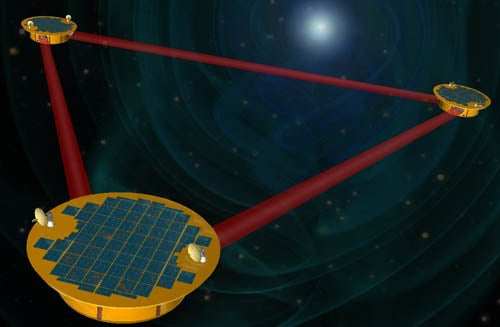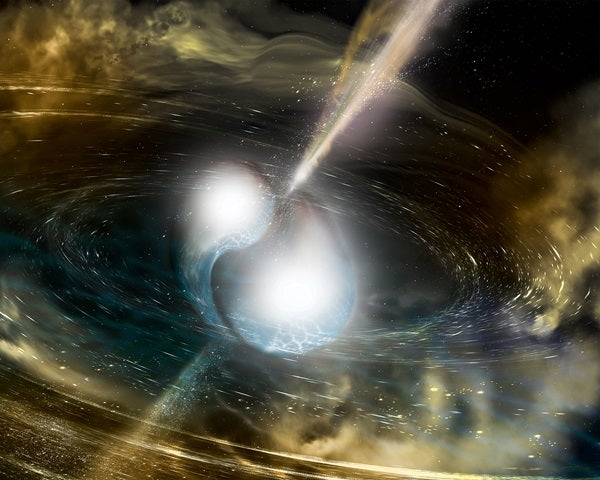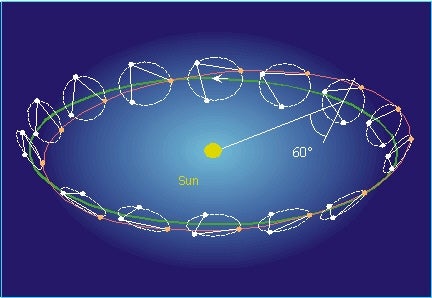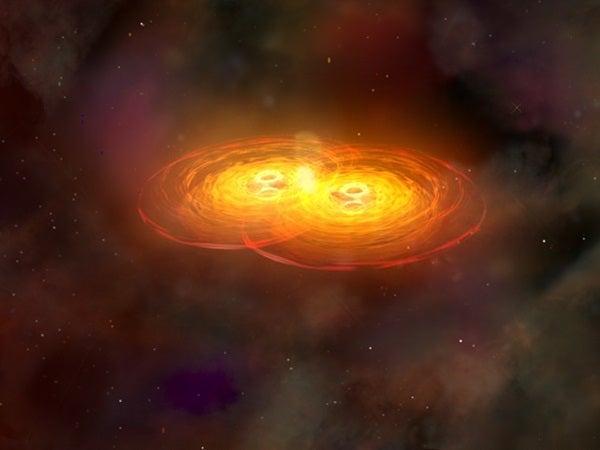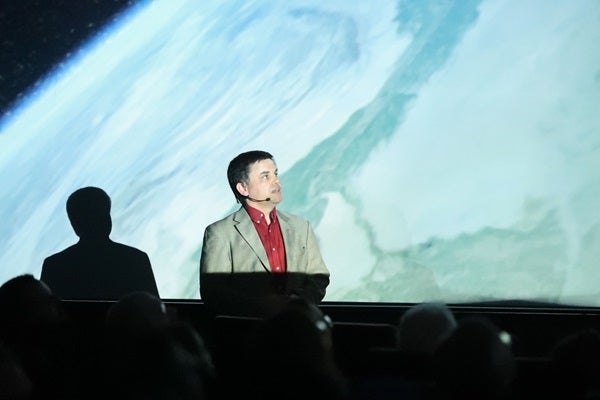Introducing multi-messenger astronomy
“The beautiful thing about multi-messenger astronomy is that it’s completely brand new. We’ve been talking about doing this for decades. And now that it’s finally here and we have the data, it really stimulates all of us to think about the whole process of answering questions in new and completely different ways,” Larson told Astronomy. A gravitational-wave astronomer, his work includes the Laser Interferometer Gravitational-Wave Observatory (LIGO) — already in operation — and the Laser Interferometer Space Antenna (LISA) — planned to launch in the early 2030s.
What is multi-messenger astronomy, and what can it tell us? One of the best examples of multi-messenger astronomy is the 2017 observation of the kilonova that resulted from the merger of two neutron stars. In most cases, astronomers must rely on only one type of observation — either gravitational waves or light — to provide information about a source or event. While they may be able to observe multiple wavelengths of light, for example, and dig out fine details that way, they are still only observing light. But during the kilonova, both gravitational waves and light were detected. With that new wealth of data, “We absolutely did all the things we thought we’d be able to do — because the information that you get from light and gravitational waves is very complementary,” says Larson. “Light tells you about what individual atoms and the stuff that the stars are made of are doing. So in the binary neutron star detection, all the light is coming from the nuclear recombination of materials and making elements and cooling of the material that’s been ejected out into the jets — that’s all the stuff about the fine-scale, what’s going on with the atoms. But the gravitational waves tell you about the bulk dynamics of the system — where is all the matter going and what are the really powerful forces that are pushing it around and how fast is it moving. And that combination of information is extraordinarily powerful.”
Enter LISA
And that game is indeed changing, with LISA on the horizon. “It’s been on the drawing boards for 30 years. Like all big missions, it has ups and downs that fluctuate with politics and money and priorities in astronomy, and all those things. But right now, we are in a very strong forward push,” says Larson.
Let’s start with current technology: each of the two LIGO facilities has two arms 2.5 miles (4 km) long apiece. At the end of each arm is a mirror; a laser located at the join of the two arms shoots a beam to each mirror, and detectors time how long it takes the light to return. When a gravitational wave passes Earth, it will stretch one arm and shrink the other as it passes, changing the time it takes the light to make the trip. By comparing the two, astronomers can detect the gravitational wave.
LISA will be made of up three spacecraft, flying in a triangular formation, to create a giant gravitational wave detector larger than Earth. Our planet’s diameter is just under 8,000 miles (13,000 km); each of LISA’s three “arms” (the separation between the spacecraft along the edge of the triangle) will be 1.6 million miles (2.5 million km) long. Inside each spacecraft will sit a small mirror made of gold and platinum. “The whole premise of the LISA mission is this mirror floats in the middle of the spacecraft, where it’s protected from everything: the solar wind, light and radiation pressure, everything. And the only thing it does is it moves if gravity tells it to move. So when it moves, the spacecraft has to follow it, and be able to tell the other spacecraft in LISA where it’s gone and how far it’s gone.”
LISA will detect gravitational waves in the range of 0.1 mHz and 1 Hz; by comparison, LIGO operates in the frequency range spanning 10 to 1,000 Hz. Just as light has several different wavelengths or frequencies, and each type of light (such as optical, infrared, and X-rays) tells astronomers something different, gravitational waves span a range of frequencies as well. LISA will be able to detect binaries shedding gravitational waves in wider orbits and with heavier masses than LIGO, opening up a new window on the universe to study objects such as white dwarf binaries and supermassive black holes. As soon as it’s turned on, LISA will detect a “hum” of sources in all directions, giving researchers a treasure trove of data that will illuminate many new and different aspects of the universe in which we live.
LISA is currently in Phase A, Larson says, which means contractors have taken a look at what the scientists want to do and will come back within about a year and a half with designs on how it can be accomplished. Once those designs are submitted, he says, the project will select one and continue moving forward. LISA is spearheaded by the European Space Agency (ESA), with NASA serving as a junior partner in the mission.
Picking apart a cosmic tune
If LISA will detect so many sources at once, how will astronomers ever separate them? It’s a bit, Larson says in his talk, like how one picks out individual voices in a room during a party. Amidst the background noise, you can easily focus in on the conversation you’re having because it’s happening nearby; astronomers will use several techniques to do the same, isolating signals against the background to hone in on a given source of gravitational waves.
One of those techniques relies on the Doppler effect. Consider a pair of white dwarfs or a white dwarf-neutron star pair circling each other, emitting gravitational waves. As Earth — and LISA — orbits the Sun, it will get nearer and farther from the pair. That will cause the pitch to fluctuate, higher as we get closer, and lower as we get farther. That pitch variation will allow astronomers to determine where on the sky that binary is located, helping them to map out the many, many white dwarf binaries expected to dot the Milky Way. (White dwarfs are the stellar remnants of Sun-like and smaller stars, which are common.)
Larson’s team also expects to hear supermassive black holes in merging galaxies collide. Those mergers will cause a sudden, loud uptick in gravitational waves — a characteristic “chirp” that should be fairly obvious against the white dwarf background. In that case, he says, it’s like picking out a particularly loud person in the room, whom you can always hear no matter where you are.
Seeing the universe in new ways
Larson’s talk and his work are both about looking at our universe in new ways. By probing the cosmos with gravitational waves, astronomers are gaining an entirely new dimension to our picture of the universe that helps to fill in our knowledge and further our understanding of numerous cosmic processes, from how stars live and die to how galaxies form and evolve.
“The universe is enormous, both in time and space. But in just the course of a human lifetime, what we understand about the universe changes in dramatic ways,” Larson says, “because we’re smart enough to build tools like telescopes and like LISA, and we’re smart enough to use those tools to see the universe in ways that our bodies were never meant to see the universe. We can piece that information all together, and tell us something about where we came from and what our purpose in this big grand thing is. There’s something powerful about that.”

